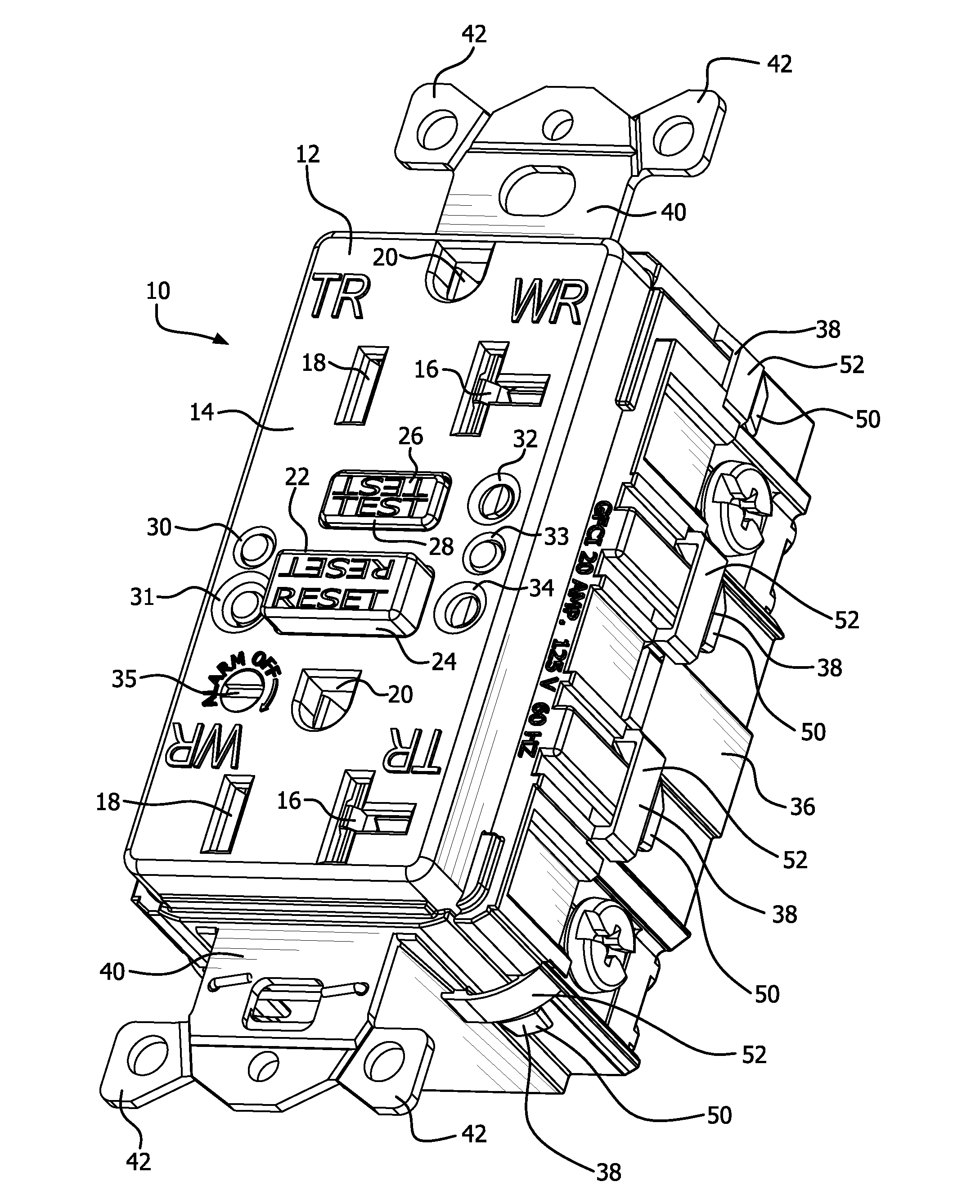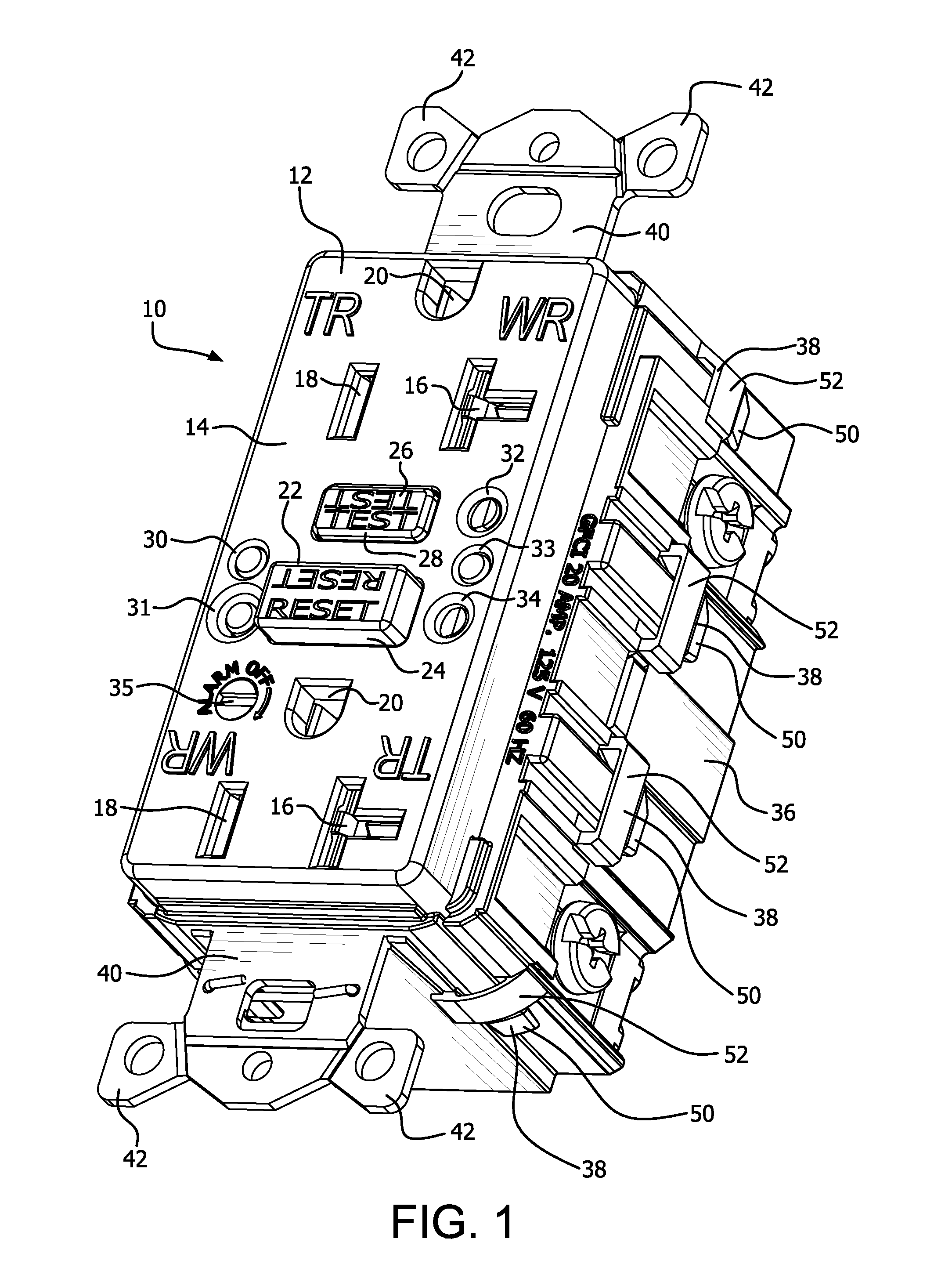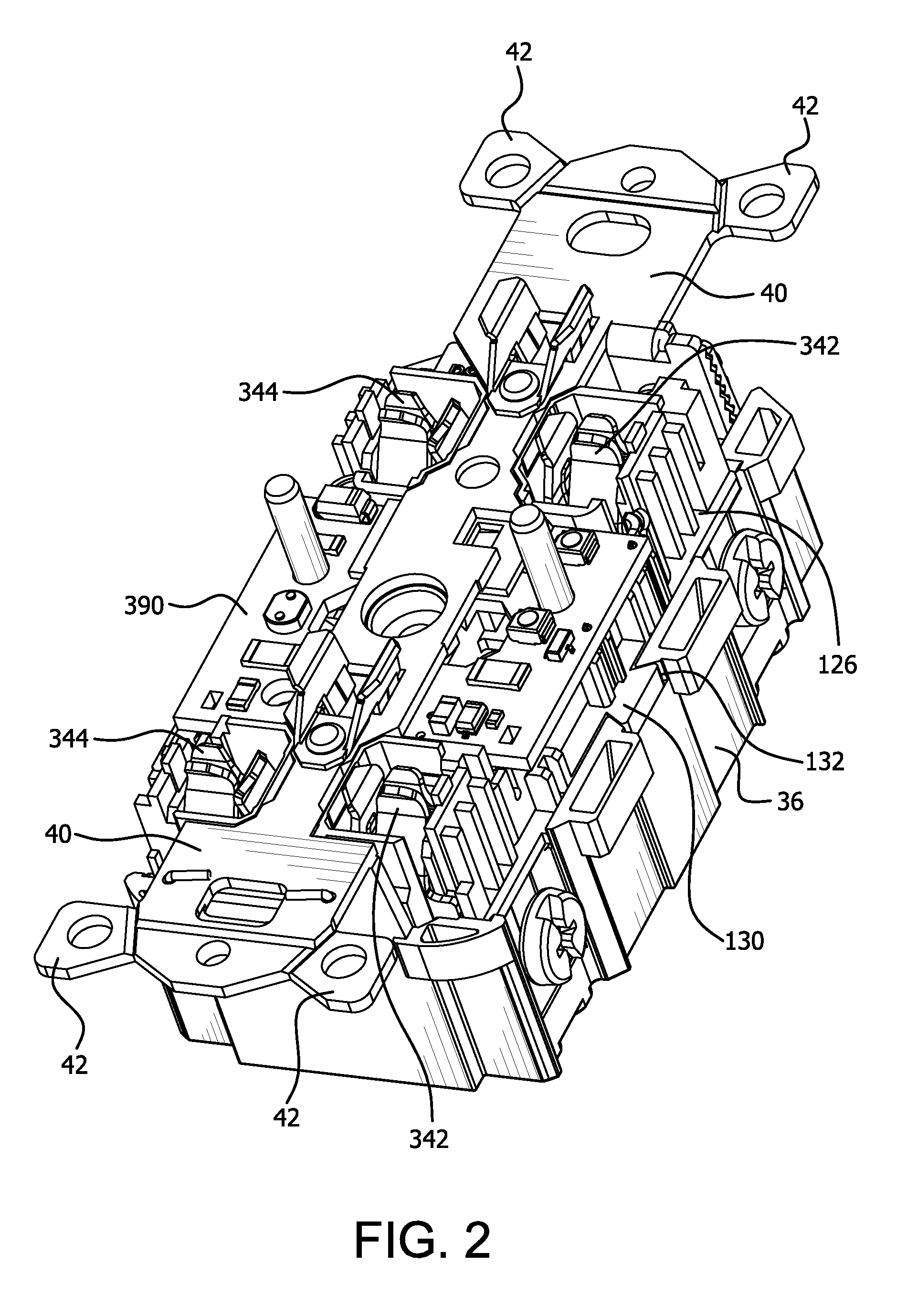GFCI self test software for autonomous monitoring and fail safe power denial
a self-testing, power denial technology, applied in the direction of electronic protection circuit testing, emergency protection arrangements for limiting excess voltage/current, instruments, etc., can solve the problems of gfci devices being susceptible to failure, devices not being able to properly detect ground faults and/or properly interrupt the flow of electrical current, and devices being unable to properly detect ground faults and/or electrical current. , to achieve the effect of preventing power loss and preventing power loss
- Summary
- Abstract
- Description
- Claims
- Application Information
AI Technical Summary
Benefits of technology
Problems solved by technology
Method used
Image
Examples
Embodiment Construction
[0030]Before any embodiments of the invention are explained in detail, it is to be understood that the invention is not limited in its application to the details of construction and the arrangement of components set forth in the following description or illustrated in the following drawings. The invention is capable of other embodiments and of being practiced or of being carried out in various ways.
[0031]Exemplary embodiments of devices consistent with the present invention include one or more of the novel mechanical and / or electrical features described in detail below. For example, one or more The method and apparatus are particularly useful for carrying out image recognition or “fingerprinting” of a movable object, such as a person or a movable vehicle, and performing reacquisition of the movable object after a temporary loss of tracking, of the exemplary embodiments of the invention disclosed include auto-monitoring or, self-test, features. Some self-test features and capabilitie...
PUM
 Login to View More
Login to View More Abstract
Description
Claims
Application Information
 Login to View More
Login to View More - R&D
- Intellectual Property
- Life Sciences
- Materials
- Tech Scout
- Unparalleled Data Quality
- Higher Quality Content
- 60% Fewer Hallucinations
Browse by: Latest US Patents, China's latest patents, Technical Efficacy Thesaurus, Application Domain, Technology Topic, Popular Technical Reports.
© 2025 PatSnap. All rights reserved.Legal|Privacy policy|Modern Slavery Act Transparency Statement|Sitemap|About US| Contact US: help@patsnap.com



